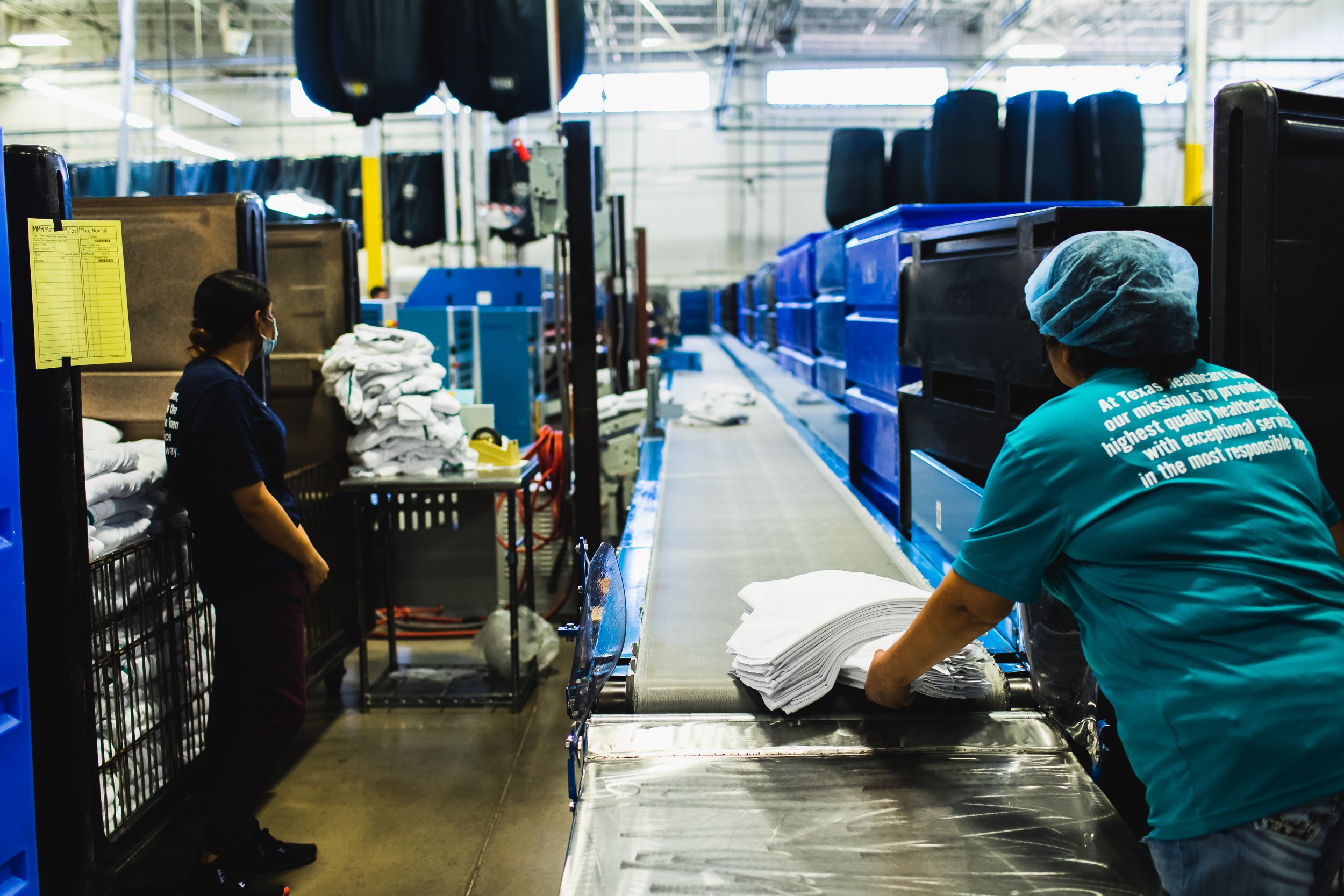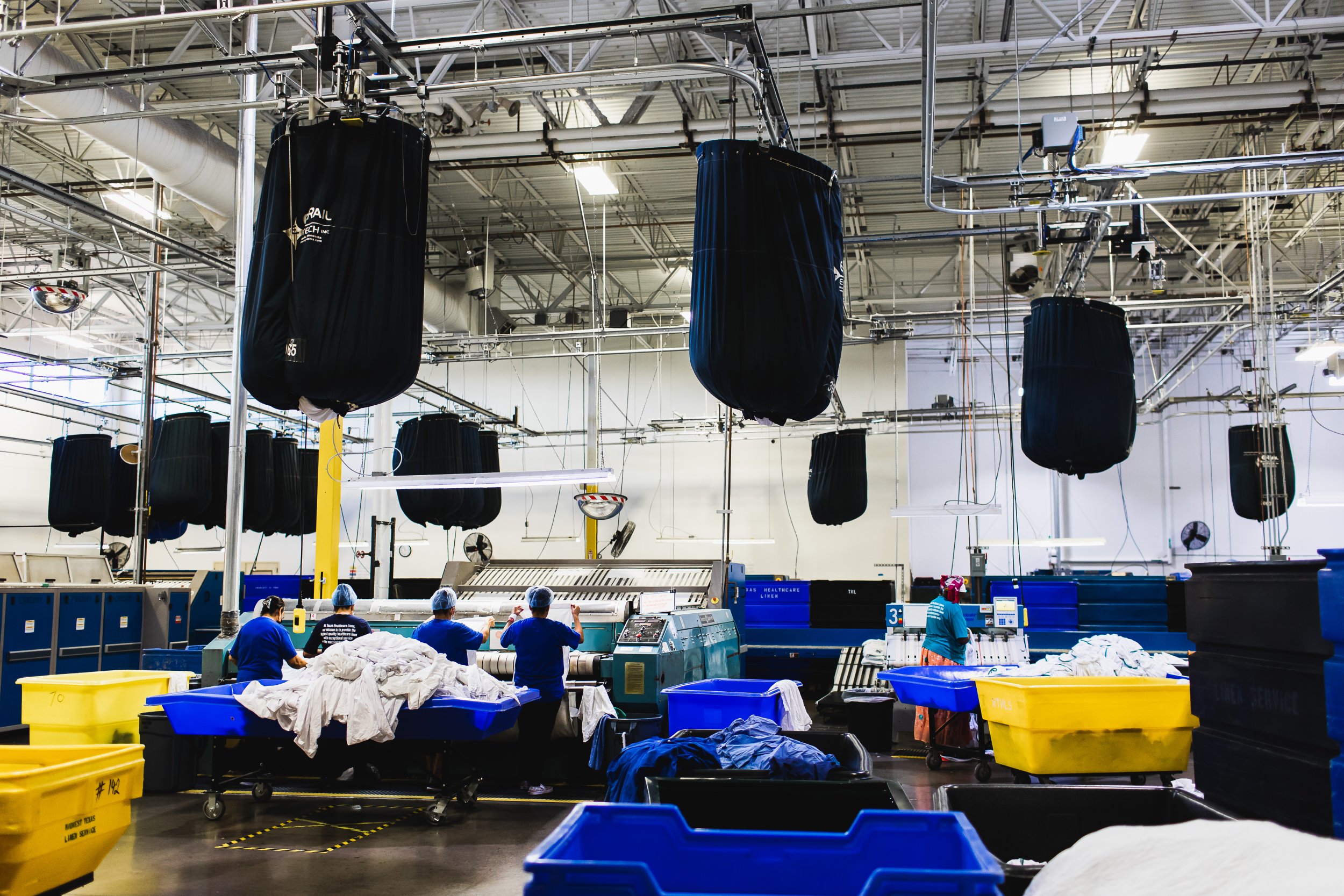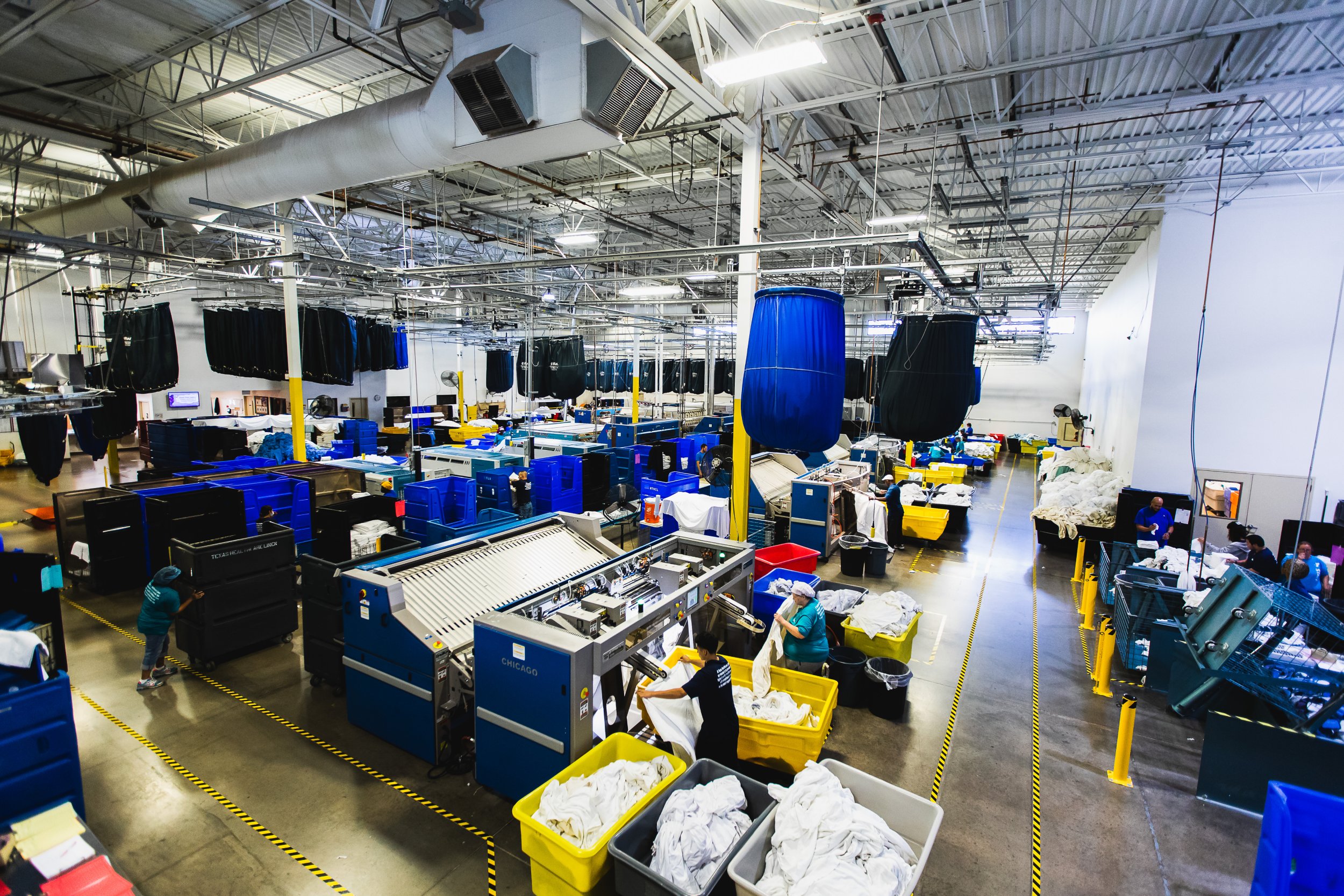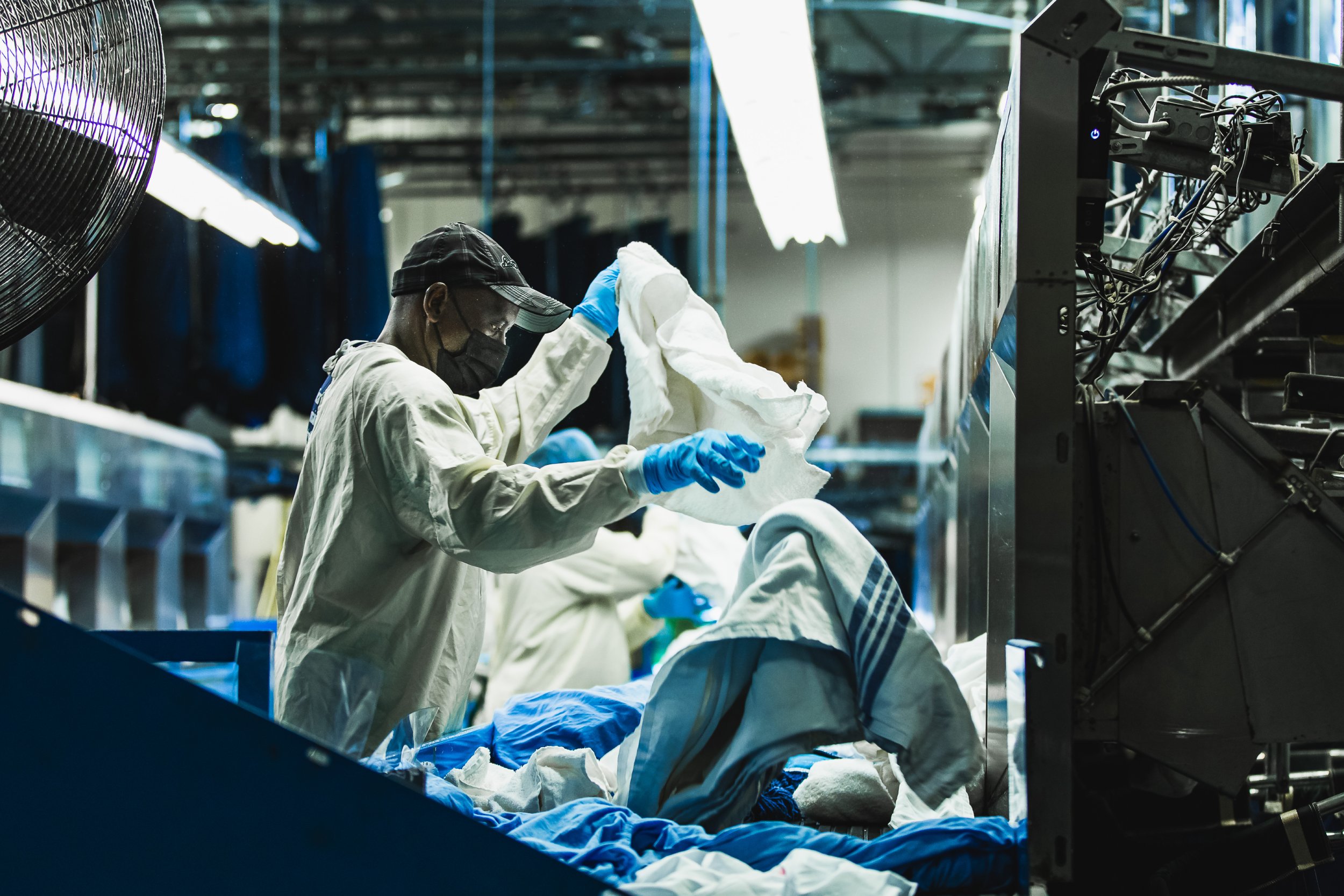There’s a lot of behind-the-scenes work that goes on at hospitals and some of it is laundry.
About 12 years ago, Texas Healthcare Linen was formed in Abilene to handle laundry from local and regional hospitals. The original owners were Medical Center Hospital, Midland Memorial Hospital and Hendrick Health in Abilene. Shannon Hospital in San Angelo was added as an owner last year.
JoeMax Tomlin is the general manager of Texas Healthcare Linen. THL serves about 75 facilities within a 200-mile radius of Abilene — “pretty much every large facility.”
“We go all the way to Lubbock, San Angelo. We go to Dallas-Fort Worth and then Odessa is as far west as we go,” Tomlin said in a phone interview.
About 15 million pounds of linen go through the facility every year, including 1.5 million pounds a year from Medical Center.
“We have our own trucks and we pick up soiled linen and deliver clean linen every day. It just kind of depends on the size of the facility on how often we come. For example, Medical Center Hospital we’re five days a week, but a small clinic, we might only be one day a week,” Tomlin said.
Their best reference is usually word of mouth from other hospitals.
“But we do have a customer service manager and myself that try to develop leads. Generally linen services are contracted for three to five years, so we just try to discover hospitals, preferably the larger hospitals … We try to find out about their contract expiration and start contacting them to develop a relationship. If it’s a good fit for us and for them, hopefully we can work out a deal,” Tomlin said.
The profit margins for the laundry are typically small.
“Our goal is provide savings to our owners, so we’re kind of a unique laundry faculty from the standpoint of we are owned by four hospitals and then all of the other facilities that are our customers are for-profit customers. But our goal is to help our owners save while providing them a great service,” Tomlin said.
“Our bottom line isn’t necessarily our focus as much as making sure we have cash flow so we can operate the business and then providing a great service to our owners,” he added.
TLC has 88 employees, depending on the day.
Drivers travel 1,000-plus miles per day.
“That’s all combined. We have nine drivers with eight different trucks, so one driver will run a route say to Lubbock and back and that’s it. Most of our routes aren’t more than 10 hours and some of them are even six or seven hours so it’s not as bad as it seems,” Tomlin said.
They may make a few stops depending on the size of the city.
The laundry started May 24, 2011. The building was constructed from the ground up as a laundry.
“Historically, services in the west-central Texas region … (were) hard to come by. The services had to come a long way to provide them and there weren’t a lot of players in the laundry industry here in the West Texas area. The service that we did get was not great. They didn’t do a good job. They were short a lot on products that were needed, or the delivery schedule was really challenging because it was so far away, or the hospitals did it in-house which is the way they did it back in the day. Hospitals need to focus on healthcare and so when they’re trying to run a laundry with employees, with utilities, with machines you’re dedicating maintenance guys to making sure a towel folder is running as opposed to doing something in a patient room. So it was more cost effective for hospitals, and still is, to outsource their linen service. Medical Center Hospital and Hendrick both shut down their in-house laundries to be able to start this,” Tomlin said.
“Midland Memorial was already getting service, but it wasn’t a great service, so all of them put their heads together and came up with this idea. I believe it’s been a great partnership,” he added.
Last year for the first time, they bought in a fourth owner, Shannon Medical Center.
“… It’s been the founding three members since its inception and then 10 years later we bought on a fourth owner,” Tomlin said.
There are several requirements for hospital linen.
“Between Joint Commission, OSHA, CDC and nursing associations … there are high standards for linen and they’re getting more stringent almost on an annual basis, so having proper services is essential for quality patient care,” Tomlin said.
Linens must be hygienically clean for patient use.
“What the hospitals do in their facilities typically is they may change the bedding out every day, or as needed, upon being soiled. But those are standards set at the hospital level. What we do is once they bag up the soiled linen whenever they flip a room, for example, they’ll put it in the soiled linen and send it back to us in delivery carts,” Tomlin said. “We open up the bags and sort it out. We have a very technologically advanced system in our facility … A lot of things are more automated, state-of-the-art technology … so that we wash effectively and efficiently.”
A lot of people assume they use washers like you have at home.
“There are two tunnel washers, each with eight, 150-pound modules (sections) per tunnel, and each module represents a different stage of the wash process. Loads of linen travel through each section of the tunnel so that by the end of the process, the linen load is clean. At any given moment, there’s 2,400 pounds of linen being washed and every three to four minutes a 150-pound load exits the back side of the tunnel, goes into a press that presses the water out of the linen and then onto a transport trolley that carries the load automatically to a 300-pound capacity dryer,” Tomlin said.
“Then we have a sling transport system … that transports it from the sort deck to the tunnel of a washer, then from the dryers on the back side to where the machines are for folding or ironing products,” he added.
The small washers he referred to are 150-pound industrial strength single-unit washers. Tomlin said it would be more like what you would have at home, but on an industrial level.
“… It’s very effective (and) efficient. … Those are for smaller loads,” Tomlin said. “All of the mass quantity goods go through our tunnel washers, but about 3 percent of what we do goes through our small wash process.”
He added that 98 percent of their linen is rental linen like a uniform service.
“We own the (rental) pool and they just rent it from us, so a bedspread is a bedspread whether it came from MCH and went to Odessa Regional or vice versa. It’s all the same spread. Then they order what they need, say 300 sheets … They submit the order online and we receive it. We fill the order and send it out the next day,” Tomlin said.
The building is still good. They’ve added equipment over the years, especially to help with the folding and ironing process.
“As we’ve added more customers, we’ve added more equipment so that we have the capability to produce the required load,” Tomlin said.
Medical Center Chief Operating Officer Matt Collins said THL has been a great joint venture.
“This goes back quite some time; probably 12-plus years. There was a time when Medical Center had its own laundry. The equipment was becoming very aged. We did the cost analysis and it would be very, very expensive to replace all of the equipment that’s involved …,” so they started evaluating their options, Collins said.
The three founding hospitals put in a certain amount of money to get it going and it was “wildly successful.”
“… It’s extremely reliable. I can’t remember a day that we’ve had any trouble, except for maybe one day during Smowmaggedon. The trucks couldn’t get from Abilene, but we still had enough emergency linen on site to be able to make it through a few days. … We’re very pleased with the quality of linen that comes out of that plant. Linen services vary widely. They handle and manage replacement linen. THL does a good job with that and we’re very pleased financially. We’re probably paying 75 cents to $1 less a pound by doing this joint venture …,” Collins said.
“We have a board of directors, so the hospital gets a say in how the laundry is run and pricing. It works very, very well,” Collins added.







